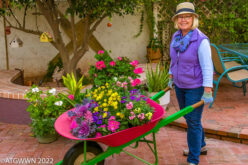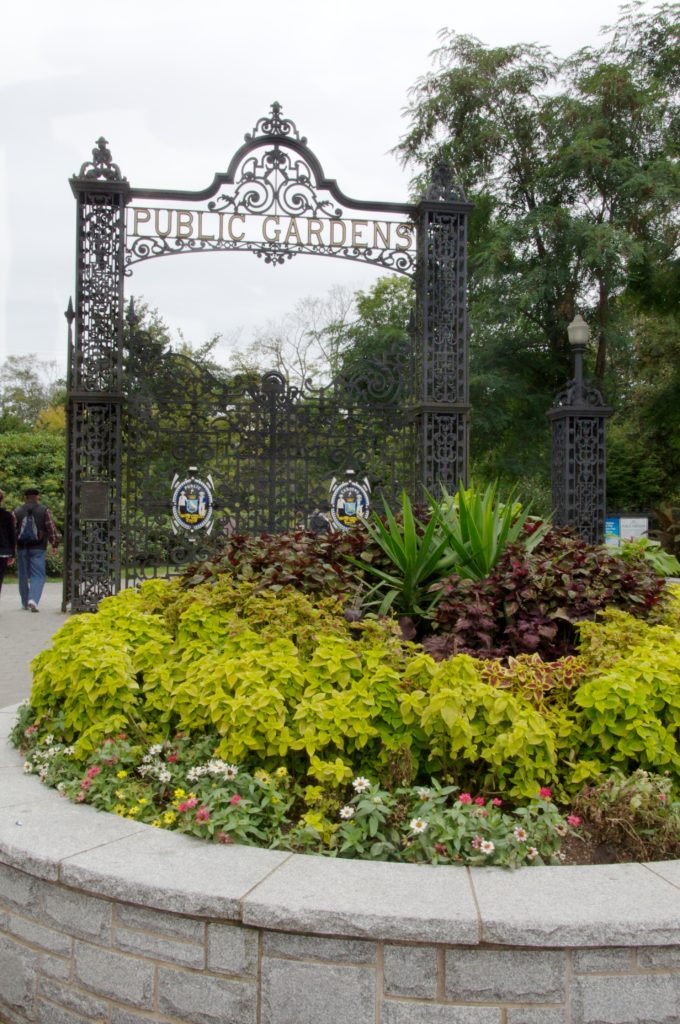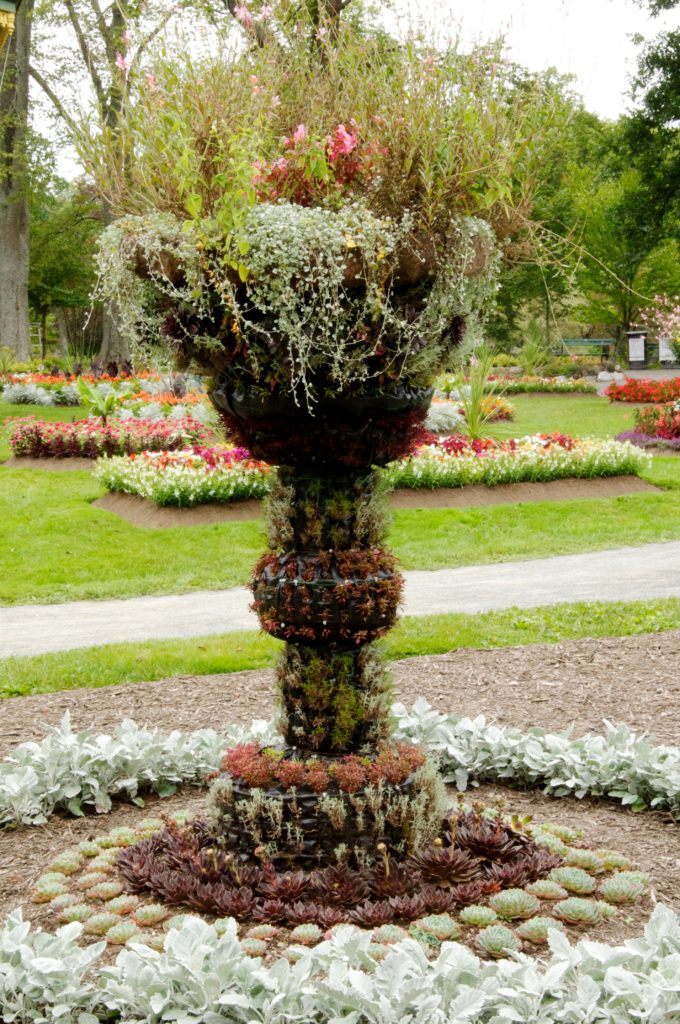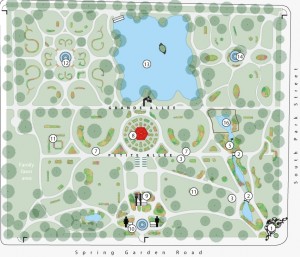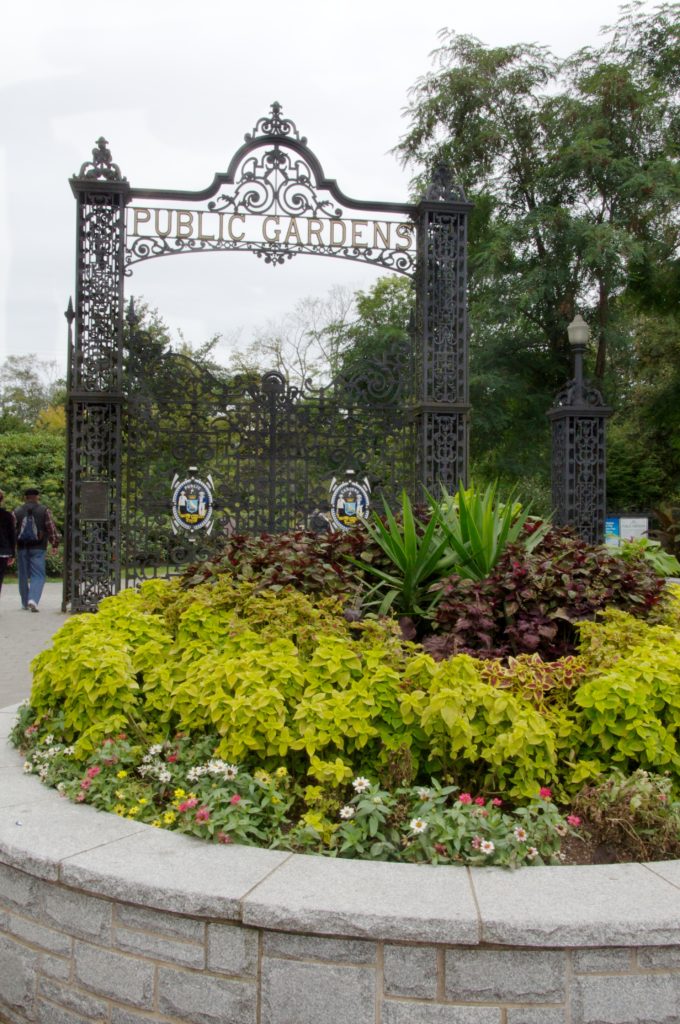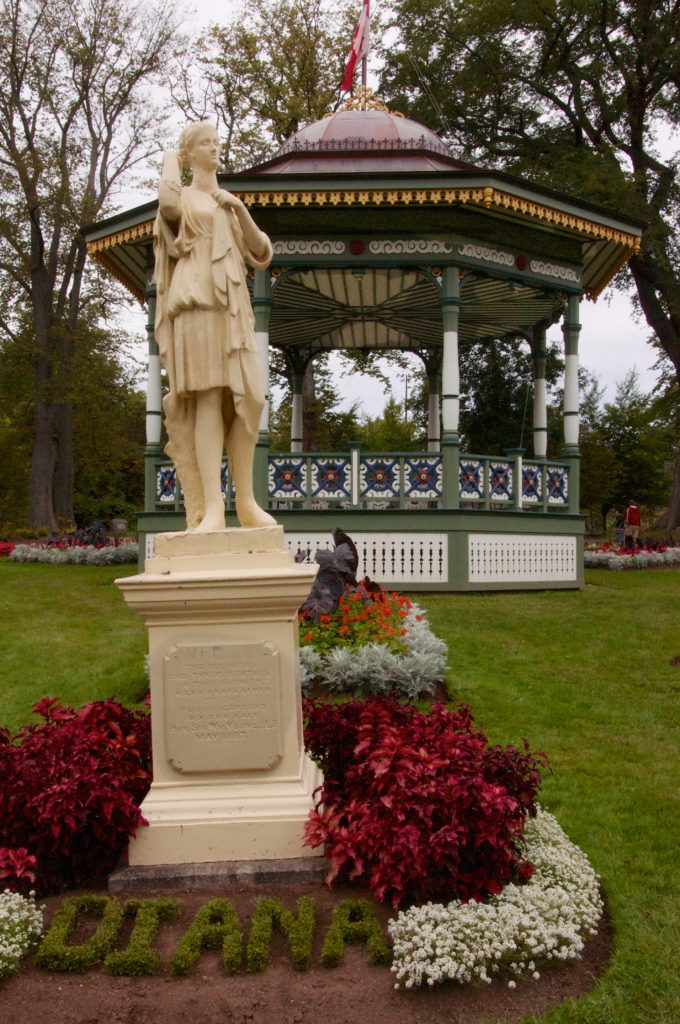What else could one expect to find at the corner of Spring Garden Road and Summer Street but a jewel of a garden? In Halifax, Nova Scotia you will find a rare Victorian Garden. This fanciful and elaborate style of garden is not often found in our modern age, but this path to the past is a grand experience.
The Nova Scotia Horticultural Society was formed in 1836 to “Advance the Art of Horticulture and the Science of Botany.” Canada was highly influenced by English gardening. In 1867 the Halifax Public garden was formally established. Here you will see all the elements prized by Victorian Gardeners over 100 years ago. The Victorian age of 1837-1901 spans the reign of England’s Queen Victoria.
Victorian gardens are formal, geometric and elegantly ordered. J.C. Loudon, described as the “father of the English garden, coined the term gardenesque to distinguish an obviously created work of horticultural art. Gardenesque focused on shapes, color, exotic plants and a great variety of specimens. There was to be no native or natural emphasis in his idea of gardens. It was a highly creative and exciting time for gardening and it was an activity open to all social classes. Gardening was viewed as “healthy, educational, productive and decorative.” (history.ac.uk/ihr/Focus/Victorians/index.html)
British ships sailed plant hunters across the world who returned with exotic plants for Victorians to marvel over. Glass houses, or conservatories, became an essential element to protect these worldly treasures. Protected inside over the winter, agaves, palms, orchids, pelargoniums, and cacti were brought out into the garden each spring. A Victorian garden was and is, high maintenance and labor intensive. New inventions were offered to assist the gardeners in the work, including a petite spade for the ladies and the marvelous lawn mower to replace the scythe.
Lawns were highly prized in Victorian times as they were the center of recreational activity providing the open green space for croquette, lawn bowling, tennis and archery. Taking ones’ meals out of doors became fashionable, sitting in the sun a pleasure to be enjoyed. A stroll around the garden could be quite a workout as a well-dressed lady in long skirts and bone corset could be wearing 37 pounds of clothing, quite a contrast to our average three pounds today. (The Victorian Gardener, Wilkinson)
Still, for all the gardens tended during the Victorian era, few examples remain to enjoy. Halifax Public Garden is a marvelous one. Walking through the soaring wrought iron gates, you enter a glorious age of gardening. This public space encompasses 16 acres surrounded by black iron fencing and ringed by 2000 trees representing over 100 species. Floating beds of colorful annuals weave through the grass like a snake. The serpentine shape mimics the decorative scroll work in the bandstand, which marks the center of the garden. Carpet beds create “rugs” of patterned plantings clipped into defining shapes of color and texture. Round pin cushion beds are mounded high with uniform planting.
There is a display of exotic plants brought out each spring from their winter residence, just as the Victorians did a hundred years ago. Classical formed statues of Diana, the hunting goddess, (associated with wild animals and woodlands), Flora, goddess of flowers and the season of spring, and Ceres, goddess of agriculture and grain crops, stand watch along the center allée of trees. Stone urns donated by Sir William Young in 1887, which surround the bandstand add to the formality of the setting. Lovely still after 126 years, “They were a mass-produced item with a ten-year guarantee when purchased from Austin & Seely Company in England.” (Friends of the Garden, Along the Garden Path blog)
A pond with strolling bridges is home to resident water birds including a pair of swans and a pair of geese. Ships’ models on a pond were a popular feature in Victorian times. Here, a model of the Titanic floats nearby. An ornate water fountain honoring Queen Victoria’s jubilee year, in 1887, has just been restored to its sparkling glory in honor of Queen Elizabeth’s jubilee. A large lawn area for family gatherings is nicely shaded for enjoying a relaxing afternoon.
Strolling through this garden is to travel back in garden time. Our gardens today rarely include the rigid symmetry or ornate flourishes of the gardenesque style. But much remains with us thanks to the obsession of gardening discoveries made by the Victorians. Regardless of geography, we enjoy all manner of plants discovered during that time, we still create the edged planting beds, add bits of lawn and benefit from their inventions of tools. It is lovely to be reminded of another style and time when devotion to the garden generated such results.
This is a beautiful garden creation and one held quite dear by this city. In 2003, Hurricane Juan did serious damage in the area. The following spring in a 24-hour fundraising campaign, residents and local business raised one million dollars to restore their beautiful garden! Each spring, true to its ornate and decorative roots, it is artistically planned to be enjoyed by residents and visitors until winter returns each year. It is not to be missed if find yourself at the corner of Spring Garden Road and Summer Street.
